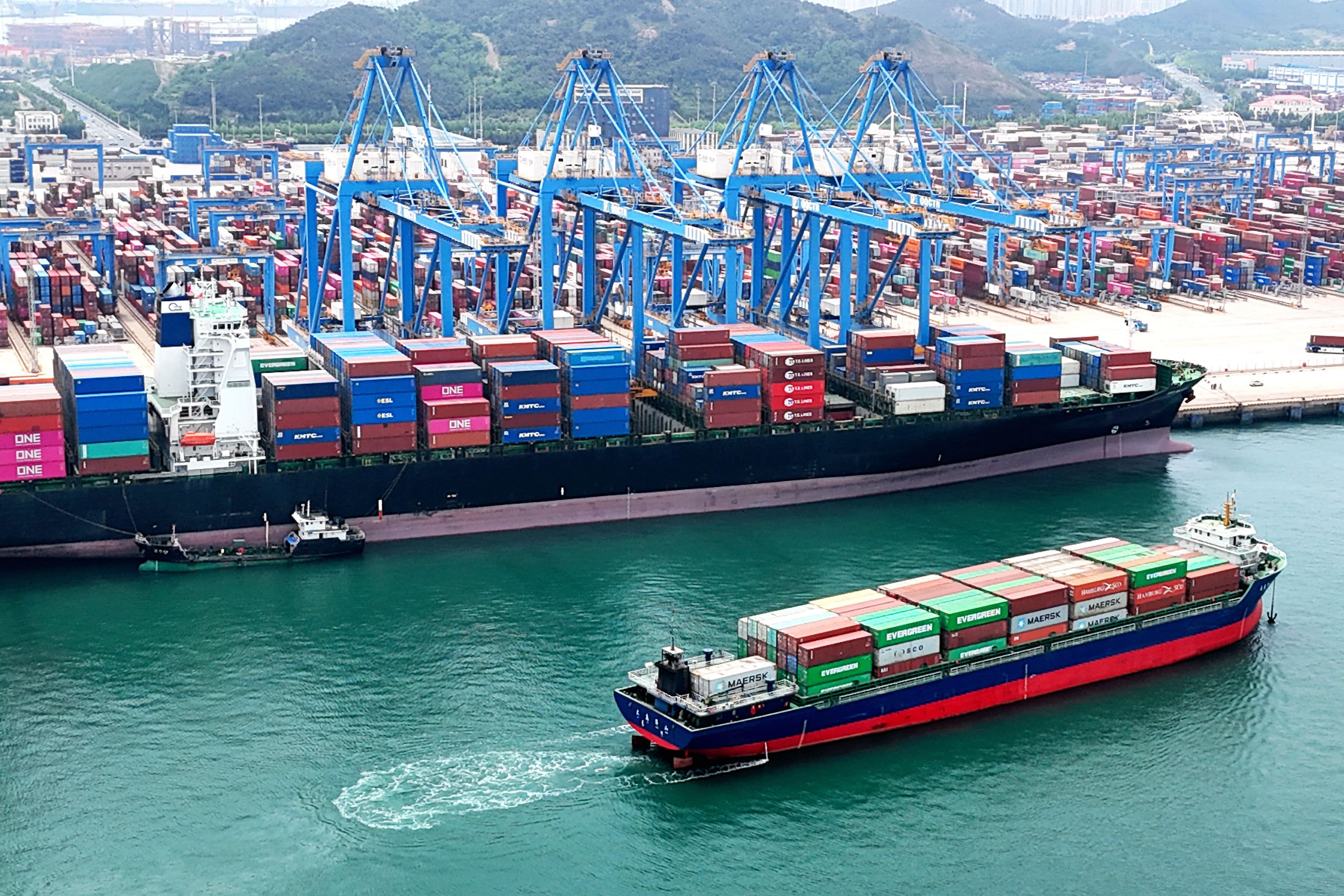Experts caution that Trump tariffs could lead to inflation in the supply chain, ultimately resulting in higher prices for consumers.

- According to trade experts, the tariffs proposed by Donald Trump will increase supply chain inflation and ultimately result in higher consumer prices, a concern raised during Tuesday night's debate, but which the former president dismissed.
- According to Freightos data, ocean freight rates doubled in 2018 due to tariffs imposed during the Trump administration.
- The immediate increase in import volumes following a Trump win in November would result in a sharp increase in freight rates, as logistics experts predict that companies will rush to move cargo ahead of new tariffs.
New tariffs threatened by former President Donald Trump, which he doubled down on during Tuesday night's presidential debate, will create inflationary pressures in the supply chain and ripple through the broader economy, according to trade analysts.
During the debate, Trump defended his trade policy, arguing that tariffs on imports and additional tariffs on goods from China will not increase consumer prices.
According to Judah Levine, head of research for Freightos, history suggests that additional tariffs will increase ocean freight rates. In the first Trump administration, importers rushed to move goods into the country before tariffs were implemented, causing ocean container rates from Asia to the U.S. West Coast to rise sharply in July 2018 and double by mid-November, as per Freightos data.
The Biden administration's planned tariff increases on certain Chinese goods, originally set to take effect in August, were postponed at the last minute by the office of the U.S. Trade Representative for an extended review period.
The tariff risk, Red Sea crisis, and potential port worker strike in October led to an early and strong peak shipping season this year, with rates from Asia to the U.S. West Coast nearly tripling from May to mid-July, reaching as high as $8,000/forty-foot equivalent container unit, according to Levine.
""
Xeneta's chief shipping analyst, Peter Sand, stated that an increase in freight demand will result in higher rates.
""
""
According to Xeneta data, the ocean container shipping markets experienced a significant increase of over 70% in 2018 when Trump raised tariffs on Chinese imports during the trade war. The average spot freight rates jumped from $1,503 per FEU (40-foot container) on January 1, 2018 to $2,604 per FEU by November 1, 2018.
"Introducing trade barriers is almost always a negative move," Sand stated. "As we saw in 2018 when Trump imposed tariffs, the cost of shipping goods by ocean spiked dramatically, and his latest proposals will likely result in history repeating itself."
During the debate, Trump defended his tariffs by stating that they would bring in billions of dollars and there would be little to no inflation, while his opponents claimed high inflation.

The Red Sea conflict and port strike risk are putting a strain on global ocean supply chains, and Trump's tariff proposals add to this pressure.
The spot rates on trade from the Far East to the U.S. East Coast increased by 303% between December 1, 2023 and July 1, 2024, while spot rates from the Far East to the US West increased by 389% during the same period.
"Geo-political disruptions, such as trade wars and conflicts in the Red Sea, are harmful to ocean supply chains and are becoming more frequent. Shippers and freight forwarders dislike uncertainty because it reduces their ability to manage supply chain risk. As a result, people in the maritime industry support global trade and oppose tariffs and other barriers."
The ongoing trade war between the U.S. and China, as well as the implementation of tariffs by both the Biden and Trump administrations, has resulted in a shift in supply chain nearshoring, with a focus on Mexico. A report released by Moody's on Wednesday revealed that the proportion of Chinese imports to the U.S. decreased significantly in the past two years, from nearly 19% at the start of 2022 to only 13.5% at the end of 2023. Meanwhile, U.S. imports from Mexico increased to around 16% at the end of 2023, from 13.5% at the start of 2022, making Mexico the top supplier to the U.S. market. China, which was previously the second-largest supplier to the U.S. at the end of 2022, was later replaced by Canada, which moved up to second place during the last quarter of 2023.
The increase of Asian nearshoring in Mexico is anticipated to be included in the next review date under the USMCA, with the results of the presidential election possibly affecting the outcome. On July 1, 2026, the U.S., Mexico, and Canada will officially decide whether or not to renew the agreement.
On Tuesday night, during a debate, Trump reiterated his previous claims about Mexican manufacturing being linked to China. He stated, "Mexico is constructing large auto factories, many of which are owned by China. These plants are being built with the intention of selling their cars to the United States, taking advantage of the Biden administration."
Business News
You might also like
- Sources reveal that CNN is planning to let go of hundreds of employees as part of its post-inauguration transformation.
- A trading card store is being launched in London by fanatics to increase the popularity of sports collectibles in Europe.
- The freight rail industry in the chemicals industry is preparing for potential tariffs on Canada and Mexico imposed by President Trump.
- Stellantis chairman outlines planned U.S. investments for Jeep, Ram to Trump.
- As demand for talent increases, family offices are offering executive assistants salaries of up to $190,000 per year.



















